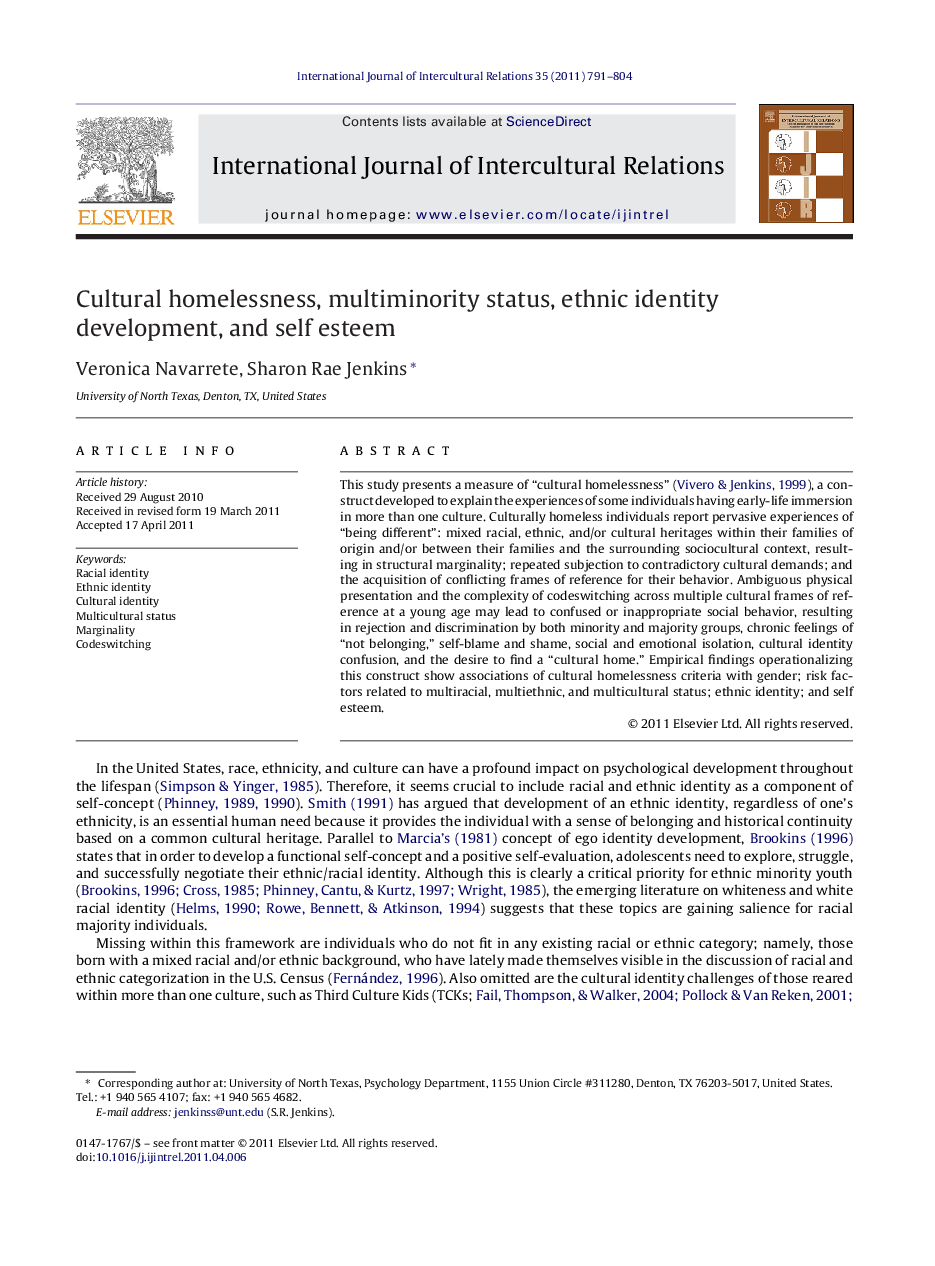| کد مقاله | کد نشریه | سال انتشار | مقاله انگلیسی | نسخه تمام متن |
|---|---|---|---|---|
| 947249 | 1475766 | 2011 | 14 صفحه PDF | دانلود رایگان |

This study presents a measure of “cultural homelessness” (Vivero & Jenkins, 1999), a construct developed to explain the experiences of some individuals having early-life immersion in more than one culture. Culturally homeless individuals report pervasive experiences of “being different”: mixed racial, ethnic, and/or cultural heritages within their families of origin and/or between their families and the surrounding sociocultural context, resulting in structural marginality; repeated subjection to contradictory cultural demands; and the acquisition of conflicting frames of reference for their behavior. Ambiguous physical presentation and the complexity of codeswitching across multiple cultural frames of reference at a young age may lead to confused or inappropriate social behavior, resulting in rejection and discrimination by both minority and majority groups, chronic feelings of “not belonging,” self-blame and shame, social and emotional isolation, cultural identity confusion, and the desire to find a “cultural home.” Empirical findings operationalizing this construct show associations of cultural homelessness criteria with gender; risk factors related to multiracial, multiethnic, and multicultural status; ethnic identity; and self esteem.
► Cultural homelessness (CH) measure was developed and tested.
► CH risk factors: mixed race–ethnic–cultural heritage, cross-cultural immersion.
► Ambiguous appearance and codeswitching demands produce confused social behavior (CSB)?
► CSB yields rejection, social isolation, low ethnic identity attachment and self esteem?
► More CH: women, mixed race/culture, cross-national moves, multilingual, low EIDA and SE.
Journal: International Journal of Intercultural Relations - Volume 35, Issue 6, November 2011, Pages 791–804